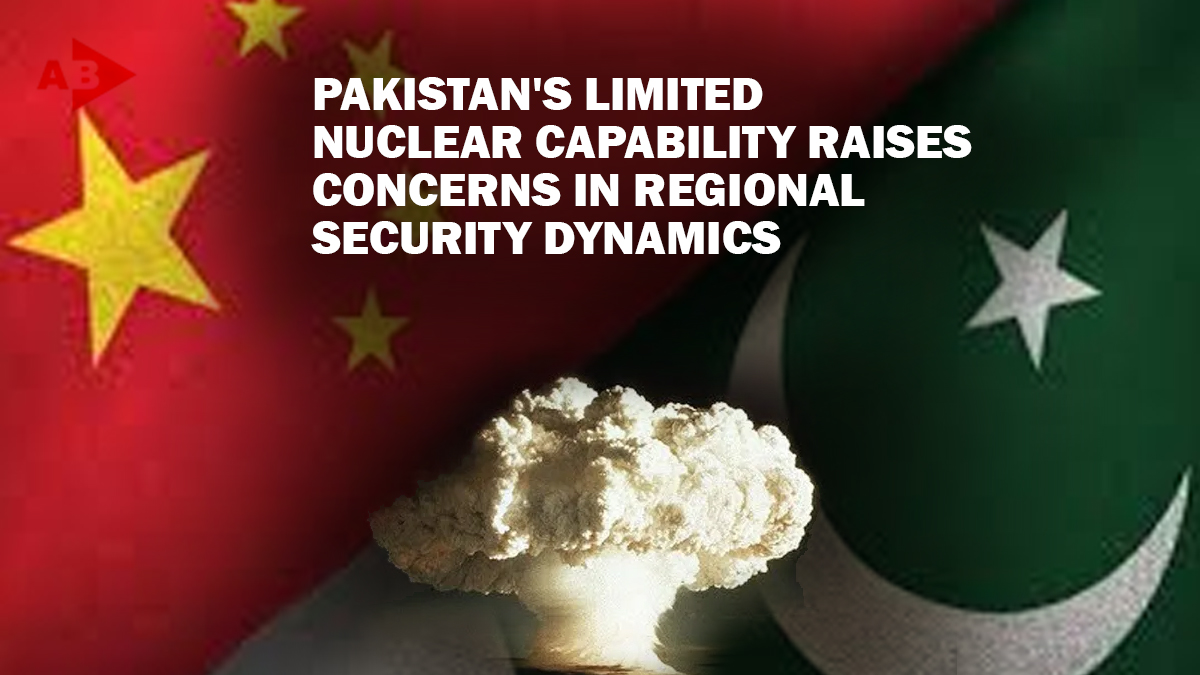
Pakistan’s Limited Nuclear Capability Raises Concerns in Regional Security Dynamics
Pakistan’s efforts to leverage its limited nuclear capabilities for strategic advantages against India and to extract advanced nuclear technology from China has significant implications for regional security. Understanding these dynamics is crucial for India and China.
Jotirmoy Roy, AB News, New Delhi: In the intricate chessboard of South Asian geopolitics, Pakistan’s nuclear ambitions pose a complex threat to both India and China. As the Pakistani military pressures China for advanced nuclear technology, concerns grow over the potential implications of this entanglement for regional security. This article explores the challenges and limitations of Pakistan’s nuclear capabilities, highlighting the precarious balance of power in the region.
Strategic Blackmail: Pakistan’s Nuclear Maneuvering
Recent revelations from retired Pakistani naval officials indicate that Pakistan’s potential for retaliatory nuclear strikes remains limited. Despite testing the submarine-launched Babar-3 missile, experts argue that Pakistan’s nuclear arsenal lacks the robustness necessary to match the strategic depth of its adversaries, particularly India. The Pakistani military has taken to blackmailing China—its closest strategic ally—by asserting demands for advanced retaliatory nuclear capabilities, allegedly in exchange for military installations at Gwadar, a port funded by Chinese investments.
This demand has created ripples of tension between Islamabad and Beijing, leading to a halt in negotiations. The Pakistani military’s insistence on nuclear deterrence reflects an acute awareness of India’s expanding nuclear capabilities. With fears that India could launch a preemptive strike, Pakistan is increasingly desperate to secure a credible second-strike capacity.
Limited Retaliatory Capability: A Glass Half Empty
Retired Vice Admiral Ahmed Saeed has noted that Pakistan’s power to launch nuclear attacks from submarines via the Babar-3 missile is relatively constrained. The missile, designed for a range of just 450 kilometers, is significantly outclassed by India’s advancements, including its Arihant-class nuclear submarines that possess a striking capability of up to 750 kilometers—far superior and far more strategic in nature.
While Pakistan currently boasts around 170 nuclear warheads, its ambition to increase this arsenal is tempered by the reality of its technological limitations. The acquisition of eight Hangor-class submarines from China, which are equipped with air-independent propulsion systems, indicates an attempt to enhance its naval strength. However, without a robust nuclear triad—a key element for credible second-strike capabilities—Pakistan’s deterrence strategy remains fragile.
The Regional Implications: India and Beyond
The evolving dynamics between Pakistan and China concerning nuclear technology not only heighten tensions in the region but also intensify the arms race, particularly concerning nuclear capabilities. China, which possesses one of the world’s most advanced nuclear arsenals and technologies, finds itself in a delicate position; it must balance its strategic partnership with Pakistan while also ensuring that its own national security interests are not jeopardized by the latter’s unstable nuclear posturing.
As India continues to enhance its nuclear capabilities, including the development of longer-range ballistic missiles, Pakistan’s strategy of using nuclear threats for leverage becomes more precarious. The already tense relations between these nations are further complicated by Pakistan’s approach to securing its strategic position against both India and an increasingly demanding relationship with China.
Uncertain Futures
Pakistan’s nuclear capabilities and its attempts to leverage them for geopolitical bargaining create an ongoing dilemma for both India and China. While its military may claim advancements in nuclear retaliation, the inherent limitations of its arsenal cannot be overlooked. As the security landscape in South Asia continues to evolve, the international community must pay close attention to these developments—both to understand the potential for conflict and to explore avenues for de-escalation and dialogue.
In a world where nuclear weapons play a decisive role, the risk of miscalculation remains high. It’s crucial for policymakers in India, Pakistan and China to grapple with these challenges seriously to prevent further regional instability. The nuclear ambitions of Pakistan, combined with its complicated strategic relationships, highlight the necessity for robust diplomacy to secure not just national but collective regional security.


